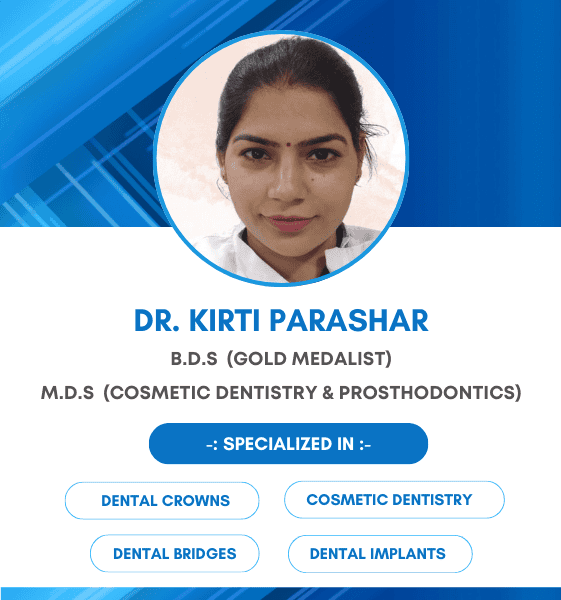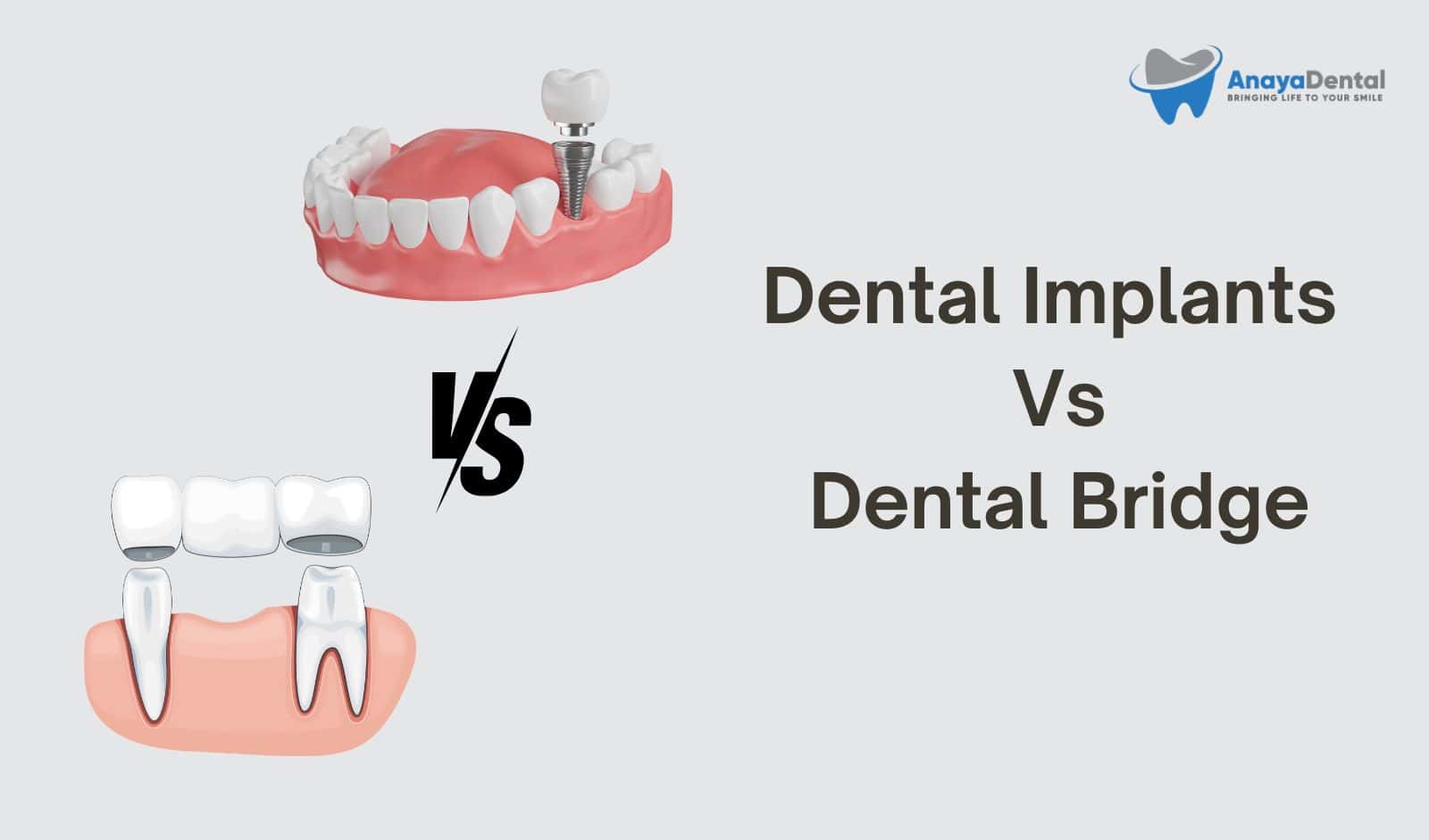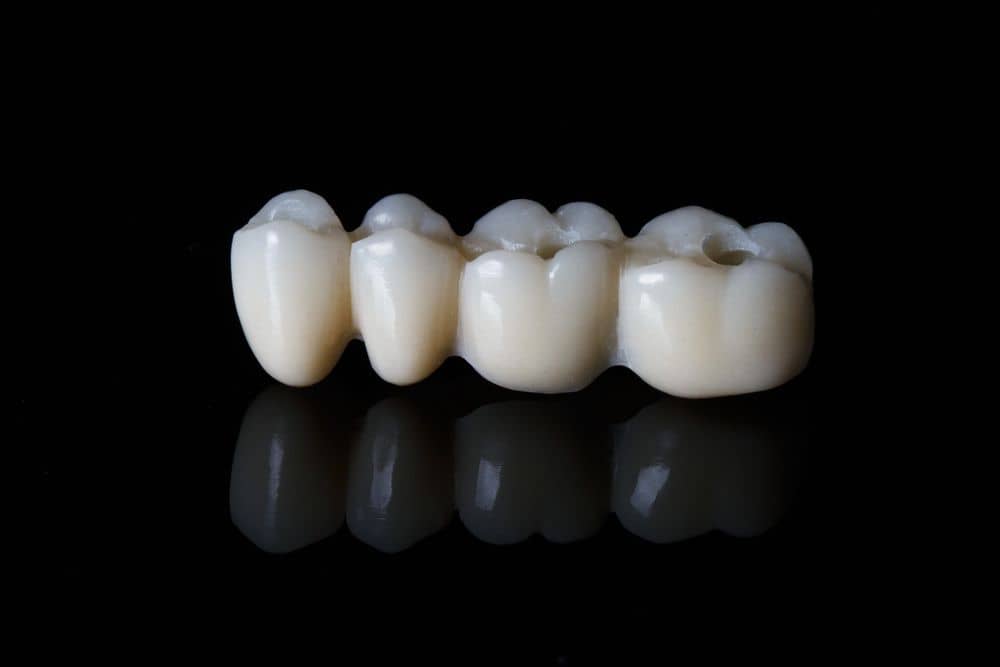The word temporary means established for the time being, until a permanent arrangement can be made. When tooth preparation/ cutting is done for bridge formation, a temporary bridge/ crown is made over the teeth to be used until the fabrication of the final bridge/ prosthesis. A temporary bridge/ crown usually does not last for more than 6-8 weeks.

- Temporary Dental Bridge- Why, Benefits, Pictures & Material
- Ill-Fitting Dental Bridge- Common Problems And Symptoms
- What To Do When My Dental Bridge Fell Out?
- Can A Dental Bridge Be Removed And Recemented?
- Replacing Front Teeth With A Bridge-Why, Pictures & Alternatives
- Tooth Decay Under Bridge- Causes, and Symptoms
- Temporary Dental bridge vs Permanent
- Temporary Dental Bridge Front Teeth
The reasons for these Temporary bridges are quite important
- Protecting the exposed dentin is the primary purpose of a temporary bridge, which prevents the prepared teeth from sensitivity.
- It also reduces the food and bacteria accumulation on the tooth preparation.
- In order to avoid making the permanent repair sitting more challenging or impossible, the third goal is to stop the tooth from migrating or shifting into any empty gaps.
- Restoring your smile
DENTAL CODE FOR TEMPORARY BRIDGE
The dental code for the temporary bridge/ crown is D2970 and for the provisional crown is D2799. The difference between both types is that a temporary bridge/ crown usually lasts for 6-8 weeks because of its material. Provisional bridge/ crown can be placed for 6 months or more as it is made up of materials like Biotemp and is usually laboratory fabricated.
WHAT IS A TEMPORARY CROWN MADE OF?
A temporary crown is mainly fabricated by using resins like polycarbonate, urethane dimethacrylate, cellulose acetate, or composites but can also be made up of metals like aluminium or nickel-chromium.
Try Our Dental Calculators
TEMPORARY DENTAL BRIDGE PICTURES


TEMPORARY BRIDGE IMMEDIATELY AFTER TOOTH EXTRACTION

Are you also worried “Immediate temporary bridge after tooth extraction?”
Yes, you can have temporary bridge immediately after extraction.
A full set of natural teeth are very important for your smile, oral and general health. But, sometimes, due to conditions like caries, any injury, or deep infection within a tooth, you may need a tooth extraction.
Ideally, you should wait for 5-6 months after recent tooth removal to get a permanent bridge. It helps in gum stabilization and proper bone contouring. Although, it becomes a very embarrassing and shameful condition if front teeth are removed.
To avoid this, a temporary bridge can be given immediately after extraction. Also, it helps in gums contouring in a very ideal shape like the tooth is emerging from the gums. It requires proper post-operative care as warm saline rinses at least three times a day. It helps in reducing pain and swelling. Till temporaries are in place avoid eating sticky and hard foods and try to eat from the opposite side of the mouth.
HOW LONG DOES A TEMPORARY DENTAL BRIDGE LAST?
As described in this article, temporary bridges are fabricated for the time being a permanent bridge is pending. This time period is usually 2-21 days. But, it can also extend according to the procedure needs. The temporary crowns are generally made of acrylic and are fabricated chairside, usually not last for more than 6-8 weeks.
But, in some cases like full mouth rehabilitation, recent extraction, or implant surgery, temporaries are to be given for a longer time like 6 months or sometimes more. Materials like Bis-acryl composite or VLC urethane dimethacrylate can be used and mainly fabricated in the lab for such procedures.
WHAT DOES A TEMPORARY DENTAL BRIDGE LOOK LIKE?
Restoring your smile is one of the key advantages of a temporary dental bridge. You may be able to smile without holding back or stuttering with its assistance.
There may be differences in appearance between a temporary and permanent dental bridge. This is because the materials used might not match your other teeth exactly, and it is not designed to last for a long time.
The appearance of a temporary dental bridge can be influenced by various elements, including the type of material utilized, the bridge’s fit, and the dentist’s level of experience. To guarantee that your temporary bridge looks as natural as possible, it’s crucial to see a qualified and knowledgeable dentist.
TEMPORARY DENTAL BRIDGE PAIN
You can feel pain/ sensitivity to hot/cold or discomfort after putting on a temporary bridge. Sometimes, the patient is unable to identify the difference between discomfort and pain. There can be various reasons as we will try to explain to you what can be wrong with your teeth-
- When the bridge process starts, tooth cutting is done around 1.5- 2mm to fit the bridge over it. This can lead to hot and cold sensitivity. Normally, it resolves itself over time after placing a temporary bridge.
- A temporary bridge may not be covering the tooth completely. Air, heat, or cold can irritate the tooth due to exposed dentin.
- An improperly fabricated temporary bridge can irritate the gums.
- Sometimes, the bridge is high and the bite is not proper, which can lead to pressure, discomfort, or pain.
The discomfort and sensitivity will subside by itself after a few days or after placing a permanent bridge but if the pain continues and you don’t feel comfortable, you should consult your dentist immediately.
care for temporary bridge
It’s crucial to adhere to these guidelines in order to make sure your temporary front tooth bridge lasts until the permanent one is ready:
- Twice a day, clean your temporary bridge with toothpaste and a soft-bristled brush.
- Steer clear of chewing on tough or sticky foods as this could harm the bridge.
- You should not use mouthwash that contains alcohol since it can hurt your teeth and gums.
- To get rid of any food fragments that might have become lodged in the bridge, rinse your mouth after eating.
- Because temporary bridges are less dependable than permanent ones, schedule your dental appointments without delay.
A temporary dental bridge can endure until the completion of your permanent front tooth bridge with the right upkeep.








